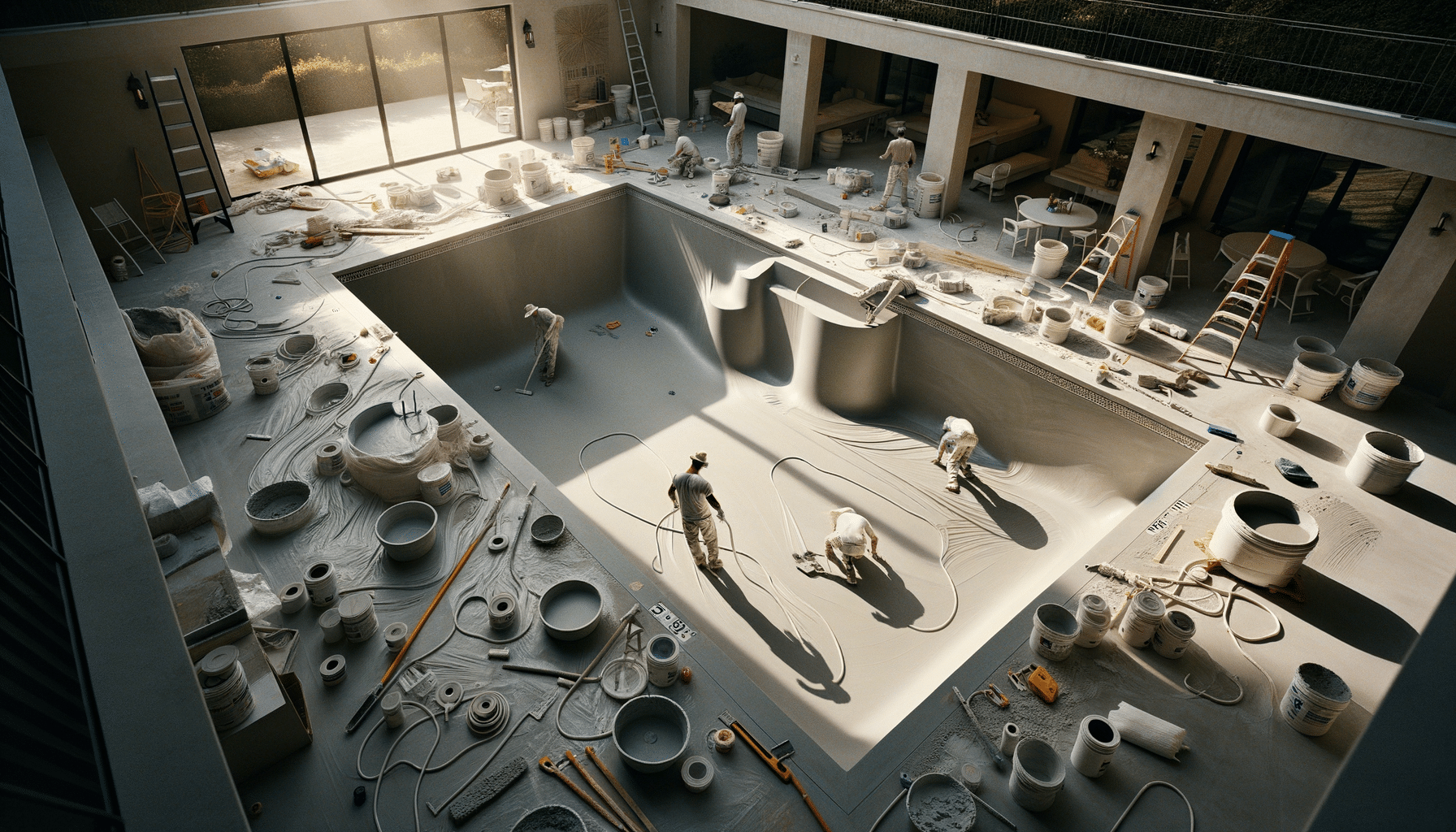
The Comprehensive Guide to Pool Resurfacing
Introduction to Pool Resurfacing
Pool resurfacing is an essential maintenance task for any pool owner, ensuring the longevity and aesthetic appeal of your swimming area. Over time, the surface of a pool can wear down due to factors like chemical exposure, weather conditions, and regular use. Resurfacing not only revitalizes the pool’s appearance but also enhances its safety and functionality. This process involves replacing or repairing the outer surface of the pool, which can prevent leaks, improve the overall texture, and provide a fresh look. Understanding the nuances of pool resurfacing can help you make informed decisions about your pool maintenance needs.
Materials Used in Pool Resurfacing
Choosing the right material for pool resurfacing is crucial, as it affects both the pool’s aesthetics and its durability. Several materials are commonly used for this purpose:
- Plaster: A traditional choice, plaster is cost-effective and provides a smooth finish. However, it may require more frequent maintenance compared to other options.
- Aggregate: This is a mixture of plaster and small stones or pebbles, offering a more textured finish. It’s known for its durability and slip-resistant properties.
- Tile: Tiles are highly durable and come in a variety of colors and designs. They are often used for decorative purposes and can last for decades with proper care.
- Fiberglass: A less common choice for resurfacing, fiberglass is smooth, durable, and resistant to algae growth. It’s often chosen for its ease of maintenance.
Each material has its own set of advantages and disadvantages, so it’s important to consider factors such as budget, aesthetic preferences, and maintenance capabilities when selecting the right option for your pool.
The Resurfacing Process
The pool resurfacing process can be broken down into several key steps, each essential for ensuring a successful outcome. Initially, the pool is drained completely to allow for a thorough inspection of the existing surface. This step helps identify any underlying issues, such as cracks or leaks, that need to be addressed before resurfacing.
Once the inspection is complete, the old surface is prepared by sandblasting or stripping away the existing material. This creates a clean and smooth base for the new surface to adhere to. Next, the chosen resurfacing material is applied. This stage requires precision and expertise to ensure even application and to avoid future issues.
After the new surface is applied, it’s crucial to allow ample time for it to cure properly. This process can take several days, depending on the material used. Once cured, the pool can be refilled, and a final inspection is conducted to ensure everything is in order. The resurfacing process, when done correctly, can extend the life of your pool significantly and enhance its overall look and feel.
Benefits of Pool Resurfacing
Resurfacing a pool offers numerous benefits that go beyond mere aesthetics. One of the primary advantages is the enhanced safety it provides. A new surface can reduce the risk of slips and falls, making the pool area safer for swimmers of all ages. Additionally, resurfacing can prevent leaks and water loss, which can lead to costly repairs if left unaddressed.
From an aesthetic standpoint, a freshly resurfaced pool can drastically improve the visual appeal of your backyard. It allows you to update the look of your pool, possibly aligning it with current design trends or personal preferences. Moreover, resurfacing can boost the overall value of your property, making it an attractive feature for potential buyers if you ever decide to sell your home.
Finally, regular resurfacing can contribute to better water quality. A smooth, even surface is less likely to harbor algae and bacteria, making it easier to maintain clean and clear water. This not only enhances the swimming experience but also reduces the need for excessive chemical treatments.
Maintaining Your Resurfaced Pool
Once your pool has been resurfaced, proper maintenance is key to preserving its condition and extending its lifespan. Regular cleaning is essential to prevent the buildup of dirt and debris, which can lead to staining or surface damage. Using a pool vacuum and skimmer regularly can help keep the water clear and the surface pristine.
It’s also important to monitor the pool’s chemical balance. Keeping the pH, chlorine, and alkalinity levels within the recommended range will prevent corrosion and scaling, protecting the new surface from premature wear. Investing in a quality pool cover can also help protect the surface from harsh weather conditions and reduce maintenance needs.
Regular inspections should be part of your maintenance routine. Checking for signs of wear or damage can help you address minor issues before they become major problems. By staying proactive with your maintenance efforts, you can ensure that your resurfaced pool remains a beautiful and functional centerpiece in your backyard for years to come.


